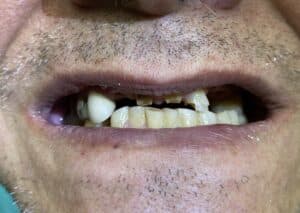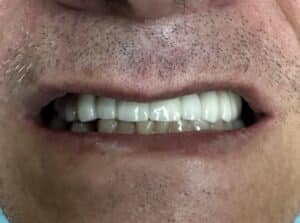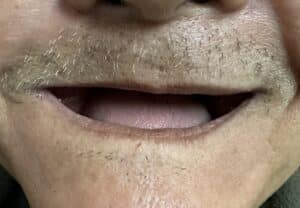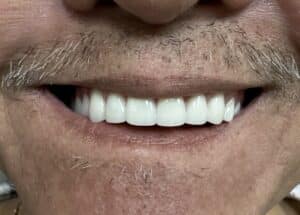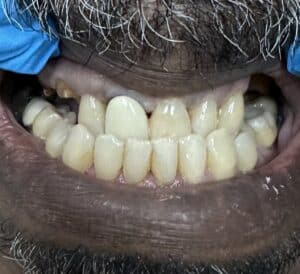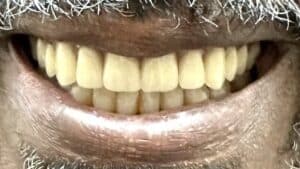Case Details
This patient has experienced excessive bone resorption and can no longer continue to wear a complete denture. The complete deterioration of the entire alveolar bone for his lower jaw has resulted in the inferior alveolar nerves to being exposed and laying above the remaining basal bone. What was once completely covered or encircled by bone the inferior alveolar nerves for both sides are now only covered by soft tissues from above and therefore by wearing and using a complete denture it would not only be non-retentive (due to the abscence of alveolar bone) but would be extremely painful as the complete denture is being pressed against the nerves when worn. As as result, an implant prosthesis (classification RP-4) is devised which is a removable prosthesis that is completely implant-retained and implant-supported (as opposed to implant-assisted). In other words, the prosthesis will have no support from the tissues and will not come into contact with the nerves just below it. Furthermore, a fixed connecting bar will be connected to the implants creating a “superstructure” which will aid in increasing the functional area of support for the prosthesis and allow for the posterior teeth on both ends to be extended more towards the rear. The fixed connecting bar will have built-in attachments (of locator type) that will attach to the locator-type housings within the removable prosthesis (aka “snap-on” or implant overdenture). Thus, this type of prosthesis will allow the patient to comfortably wear and chew his food without any discomfort or impingement to his nerves and at the same time allow the patient to remove or detach the prosthesis to properly clean and care for it as well as the area around the implants and the fixed connecting bar.
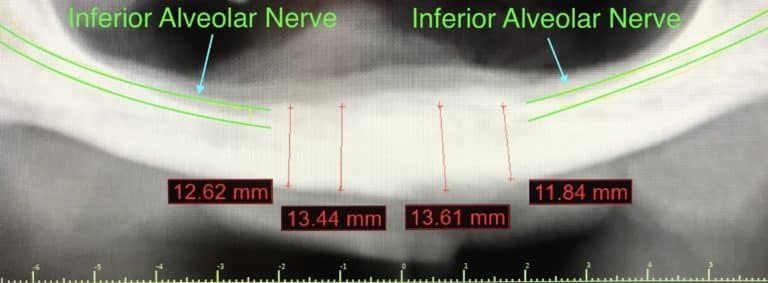
Before

After
Description: Four endosteal implants are free-handedly placed in the anterior section (symphysis) of the mandible in between the mental foramen on each side of the jaw. After an adequate time has occurred for the fusing process of the dental implants to the bone (osseointegration) the dental implants are connected with a fixed connecting bar. This "superstructure" will act as a uni-structure that will bear and distribute the loading forces from the prosthesis more efficiency and minimize undesirable stress factors to the dental implants.
Before
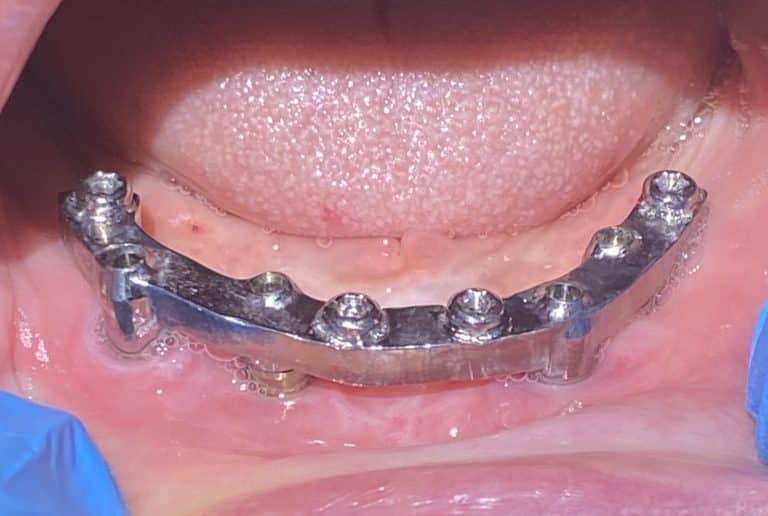
After
Description: The fixed connecting bar is made of 100% titanium material.
Before
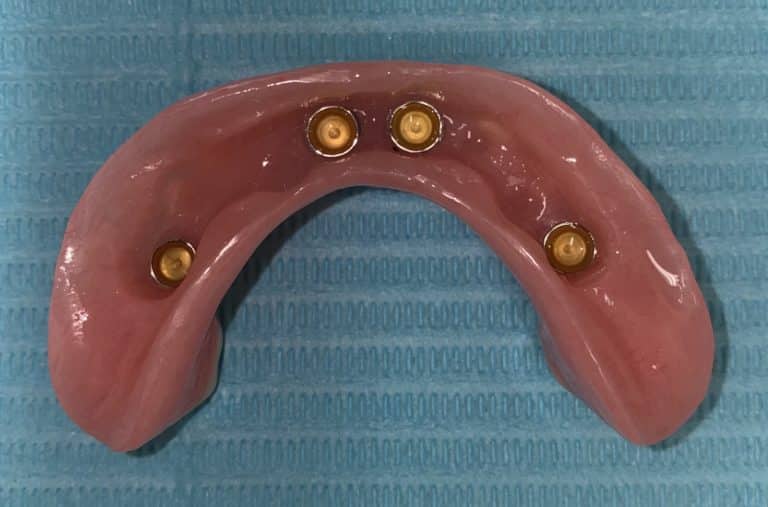
After
Description: Four titanium housings for the locator-type attachments are installed within the intaglio or inner surface of the modified existing complete denture which is now called an implant overdenture. The tightness or retention of the attachment for the overdenture can be adjusted to the patient's preference by interchanging the silicone retention caps within the titanium housings and can be soft, standard, or strong.
Before
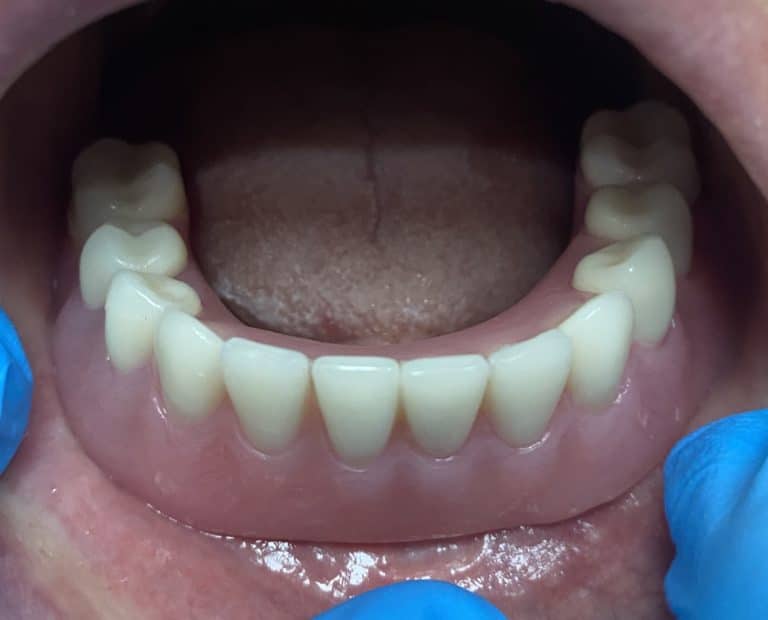
After
Description: The implant overdenture (aka removable "snap on" prosthesis) can now be worn without any movement or causing excruciating pain and discomfort during normal use.
Before
After

